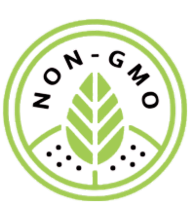Featured Collection
Featured Collection
Shop our most popular Herbs
Our Price: $8.25



 Culinary
Culinary Pollinator
PollinatorAlso known as the "Herb of Gladness," blue borage stands out in gardens with its mesmerizing blue star-shaped flowers and delicate, cucumber-like flavor. Originating from the Mediterranean, this annual herb is admired for its beauty, practical benefits, culinary uses, and medical properties.
Discover the joys of cultivating Blue Borage and elevate your garden with this delightful and beneficial herb. Check out The Growers Exchange’s borage plants for sale and get a healthy blue borage shipped to your doorstep!
Blue borage, or its scientific name, Borago officinalis, boasts a fascinating history that spans millennia. It originated in the Mediterranean and spread its cultural and medicinal influence across ancient civilizations. Its name is derived from the Arabic word "abu buraq," meaning "father of sweat," alluding to its historical use as a diaphoretic to induce sweating and purify the body.
Renowned among the Greeks and Romans, blue borage was used in culinary traditions and herbal medicine. In ancient times, blue borage was prized for its medicinal properties to alleviate fevers, respiratory ailments, and gastrointestinal issues. It was also valued for its symbolic significance in various rituals and ceremonies, symbolizing courage and strength. Additionally, blue borage flowers were adorned in banquets and feasts. They were also used as decorative garnishes and infused into wines and teas to enhance flavor and provide a refreshing herbal note.
Blue borage is characterized by its hairy, oval-shaped leaves and striking blue flowers that attract pollinators such as bees and butterflies. It grows vigorously, reaching heights of up to two feet, making it an excellent addition to herb gardens, borders, and containers. The entire plant is edible, with a mild cucumber-like flavor that enhances sweet and savory dishes.
Blue borage offers a range of benefits that make it a prized addition to any herb garden. Incorporate Blue Borage into your garden to enjoy its benefits, including:
Edible Flowers: The vibrant blue flowers of blue borage are visually stunning and edible. They add a splash of color to salads, desserts, and beverages, imparting a mild, refreshing cucumber-like flavor.
Medicinal Uses: Traditionally, blue borage has been used in herbal medicine for its anti-inflammatory properties. It is believed to help soothe respiratory issues, promote healthy skin, and support overall well-being.
Pollinator Attraction: Blue borage is highly attractive to pollinators such as bees and butterflies. Planting blue borage in your garden can support pollinator populations and promote biodiversity.
Companion Planting: Blue borage can be a companion plant that repels certain pests and attracts beneficial insects to the garden, enhancing the health and productivity of neighboring plants.
Culinary Versatility: Its flowers and leaves can be used in culinary preparations. They are excellent for garnishing dishes, infusing teas, or flavoring beverages with a subtle, floral note.
Easy to Grow: Blue borage is a hardy annual that thrives in sunny locations with well-drained soil. It requires minimal maintenance and can self-seed, making it a low-effort addition to any garden.
This self-seeding plant can easily spread throughout your garden with the proper care and environmental factors. Here are some maintenance tips for growing blue borage in your garden:
Location: Blue borage is an annual plant that blooms in the summer. It is best kept in areas with full or partial sun exposure.
Planting: Directly sow seeds in the garden after the last frost date or start seeds indoors and transplant seedlings once the weather warms.
Soil: Ensure the soil is fertile, loose, and well-draining to promote healthy growth and prevent root rot.
Watering: The starter plant will require regular watering. Keep the soil moist, especially during dry spells, but avoid waterlogging. Once repotted or planted in its new location in your garden, wait for the soil to be dry to the touch before watering.
Harvesting: Blue borage has a long harvest period. Harvest leaves and flowers as needed throughout the growing season. Pinch back flowering stems to encourage continuous blooming.
Ecosystem: Blue borage is a favorite among pollinators, which benefits garden biodiversity and ecosystem health. It also repels unwanted, harmful insects by naturally attracting predatory insects, making it a great companion plant for basil, nasturtiums, and parsley.
Companion Plant: Blue borage naturally repels unwanted insects, making it a suitable natural deterrent for protecting plants that are more vulnerable to pests. It also pairs well with food crops, such as tomatoes, berries, and squash, and is believed to improve the taste of fruits and vegetables growing near it.
The Growers Exchange offers premium blue borage plants grown carefully to ensure vigorous growth and vibrant blooms. Whether you're enhancing your culinary creations or creating a pollinator-friendly garden, our blue borage plants are guaranteed to thrive and delight. Shop at The Grower’s Exchange today for the perfect new additions to your garden.
Characteristics: Borage is a highly ornamental garden herb ~ at the peak of its growth it appears to be enveloped in a blue haze of sky-blue flowers.
Light: Borage likes full sun.
Water: Water often as Borage prefers moist soil. Mulch well to retain moisture in the soil.
Soil: Moist, but well-drained soil. Borage will not do well in a soggy situation.
Use: Enhance the flavor of chilled vegetable soups with the addition of 2 tablespoons of finely minced borage. Don't forget to add a few flowers for a garnish.
Borage is said to make a wonderful general companion plant for most vegetable crops including, tomatoes, cucumbers, gourds. cabbage, and even strawberries. Thought of as the "magic bullet" of companion plants, it increase the health and flavor of neighboring plants while attracting beneficial predatory insects and honeybees to help police your garden from harmful pests.